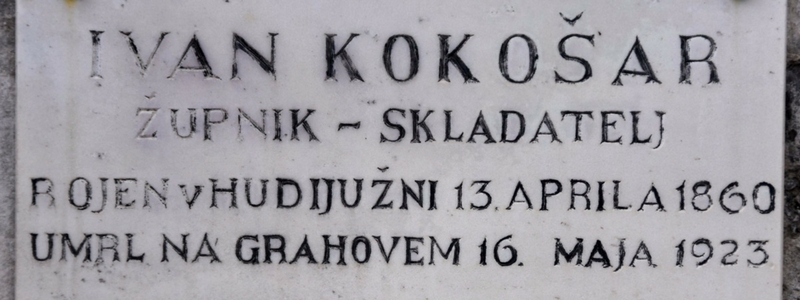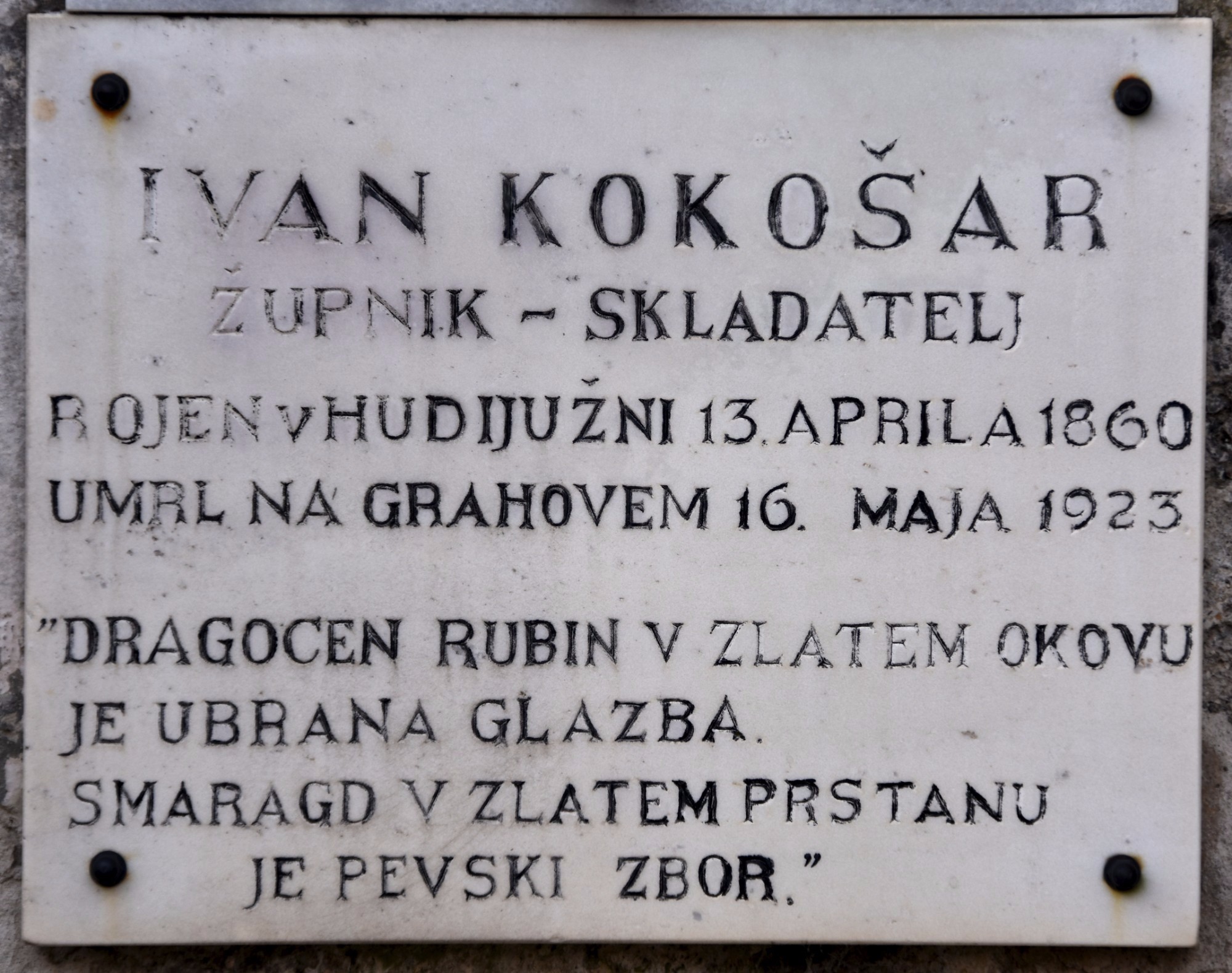In 1924, on the initiative of the Grahovo ob Bači parish, a stone memorial plaque was attached to the wall of the parish church, bearing the inscription:
Ivan Kokošar
Parish priest – composer
Born in Hudijužna on 13 April 1860
Died in Grahovo on 16 May 1923
“A precious ruby in a gold band
Is mellifluous music.
An emerald in a gold ring
Is a singing choir.”
Ivan Kokošar
Ivan Kokošar (1860–1923), a church musician from the Slovenian Primorska region (the Littoral), devoted himself to the implementation of Caecilian vocal music reform, in the framework of which he endeavoured to uphold folk music tradition.
He was first initiated into the world of music as a grammar school student in Gorizia in the class of Mihael Kamel. He decided to pursue his vocation as a priest, but still regularly applied himself to music. He studied organ while attending the theology seminary in Gorizia, where he learnt the rudiments of composition. Caecilian composer Danilo Fajgelj helped him ameliorate the harmony of his first compositions.
He embarked on his clerical career in 1883, when he was ordained. He became a chaplain in Cerkno, where he established his first church choir. He later on served as a parish priest in Šebrelje and the St Ignatius Church in Gorizia. He spent his final years in Grahovo, where he was a dean.
Between 1882 and 1888, several of his compositions were published in Cerkveni glasbenik (Church Musician), a journal issued by the Caecilian Society, including Latin hymns (Tantum ergo), Marian Litanies or the Litanies of Loreto, Ave Maria and some Slovenian religious hymns. Kokošar’s musical idiom followed Caecilian principles, that is, strict functional harmony and homophony. He also wrote about these principles in his articles.
Zealously researching the folksong tradition of the Gorizia region, he collected and transcribed over 700 folk songs and those that had entered the national folk song repertoire. He left this collection to a friend, organist Roman Pahor, who later entrusted it to composer Matej Hubad and ethnologist Stanko Vurnik.
Intended to be sung during liturgical worship, Kokošar’s adaptations of folk songs were published in four volumes of Cerkvene pesmi (Church Songs) by the Caecilian Society. By transcribing works for choral ensembles, Kokošar influenced both Slovenian liturgical singing and the musical creativity of a new generation of musicians and choral singing enthusiasts. His influence extended as far as composer Emil Adamič, who adapted six national songs based on melodies from Kokošar’s collection. The Association of Slovenian Choirs published these songs in 1924.
Maia Juvanc

